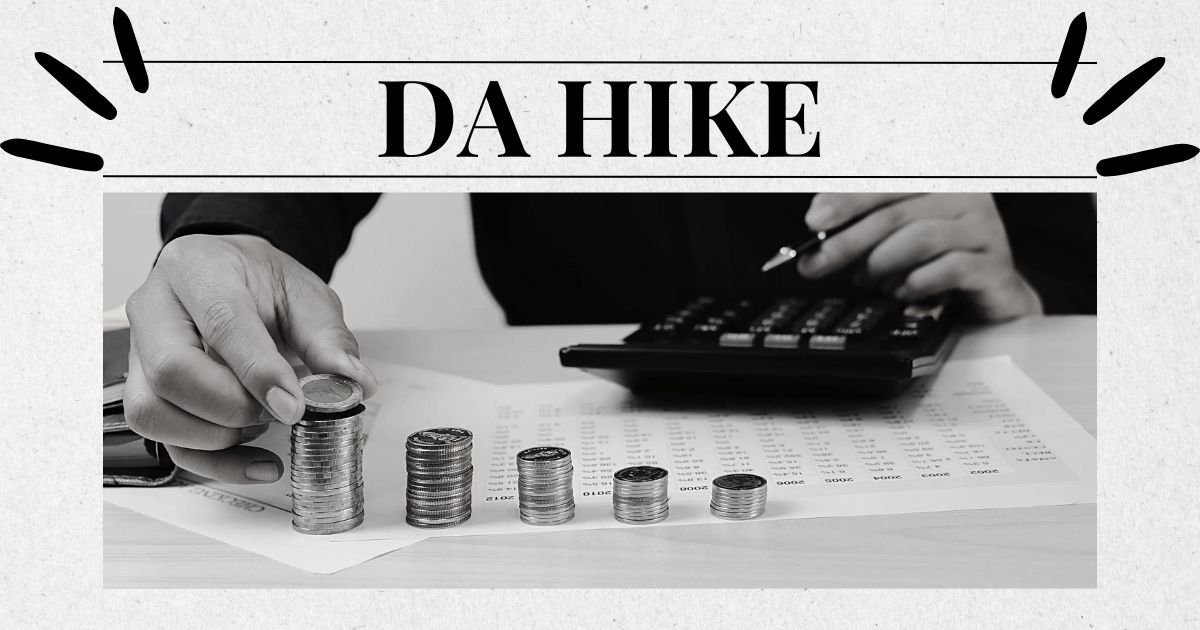DA Hike for Central Government Employees – DA Hike announcement March 2025 – Latest news update of DA Hike for Central Government Employees – 2% DA Hike in January 2025 – DA Hike Formula for Central Government Employees
DA Hike for Central Government Employees
The Dearness Allowance (DA) is an essential component of the salary structure for government employees in India. It is provided to offset the impact of inflation and maintain the purchasing power of employees, ensuring that they can maintain their standard of living despite rising prices. DA is revised periodically, and the hike in DA is one of the most anticipated announcements for government employees.
DA Hike in January 2025
There is 2 % DA hike for central govt employees from January 2025. Government has announced DA for January 2025. Central Government has approved 2% hike in dearness allowance. Now DA has increased from 53% to 55% from January 2025.
What is DA (Dearness Allowance)?
DA is a cost-of-living adjustment paid by the government to its employees to help them counter the effects of inflation. It is calculated as a percentage of the basic salary and is designed to adjust for increases in the cost of goods and services. DA is particularly important in India, where inflation rates can fluctuate significantly, impacting the economy and individual finances.
For central government employees, DA is revised every six months, typically in January and July. The revision is based on the Consumer Price Index (CPI), which measures the rate of inflation in the economy.
DA Hike – What Does It Mean for Central Government Employees?
The DA hike is a much-awaited event for central government employees, as it directly affects their monthly salary. When the government announces a DA hike, it reflects an increase in the amount of dearness allowance provided to employees. The hike can be significant or moderate, depending on the inflation trends and the government’s fiscal situation.
DA hikes are not limited to central government employees alone; they also extend to pensioners and employees in various public sector enterprises. The increase can be substantial, as it serves to offset the rising cost of living, particularly in urban areas where inflation can be higher.
For example, in previous years, the government has announced DA hikes ranging from 4% to 5% depending on the CPI (Consumer Price Index) data.
DA Hike Formula for Central Government Employees
The calculation of DA is based on a specific formula, which is aligned with the All-India Consumer Price Index (AICPI). The formula for calculating DA for central government employees is as follows:
DA = (Average of AICPI for the last 12 months – 115.76) / 115.76 × 100
Here’s a breakdown of the formula:
- AICPI (All India Consumer Price Index): This index is published by the Labour Bureau and represents the price level of a fixed basket of goods and services purchased by the average Indian household. The government uses this index to assess changes in the cost of living for employees.
- 115.76: This is the base index value. It represents the price level in the year 2001 (the base year) when the DA calculation formula was first standardized.
- Average of the AICPI for the last 12 months: The DA calculation uses the average value of the AICPI over the last 12 months to reflect recent inflationary trends.
Once the average AICPI value is calculated, the DA hike is determined by the formula, which gives the percentage increase in the allowance.
Factors Affecting the DA Hike
The DA hike is influenced by various factors, primarily revolving around the economy and inflation trends. These include:
- Inflation Trends: The rate of inflation, as reflected in the Consumer Price Index (CPI), directly impacts the DA hike. Higher inflation means a higher DA to maintain the real income of employees.
- Economic Growth: The overall health of the economy, including GDP growth and government revenues, plays a role in determining the extent of the DA hike. A healthy economy allows for higher hikes, while economic constraints might limit the increase.
- Government Fiscal Position: The government’s fiscal policy and budgetary position can also determine the DA hike. If the government is facing fiscal deficits, it might opt for lower hikes or even freeze DA for a while.
- Labour Union Representation: Trade unions and associations often lobby for higher DA hikes to safeguard the purchasing power of employees. Their representation can influence the government’s decision on DA revisions.
Importance of DA Hike for Central Government Employees
- Maintaining Purchasing Power: The primary purpose of the DA hike is to protect the purchasing power of government employees. As the cost of living increases, the real value of a person’s salary can decline. A DA hike ensures that employees can maintain their standard of living.
- Boosting Employee Morale: A DA hike is often seen as a recognition of employees’ contributions. It acts as an incentive, boosting the morale of government workers.
- Pensioners Benefit: DA hikes also apply to pensioners, helping them cope with rising living costs in their post-retirement life.
- Economic Indicator: DA hikes often act as an indicator of the overall economic conditions in India. A consistent increase in DA may indicate rising inflation, while a freeze or a low hike may signal a period of economic constraints.

